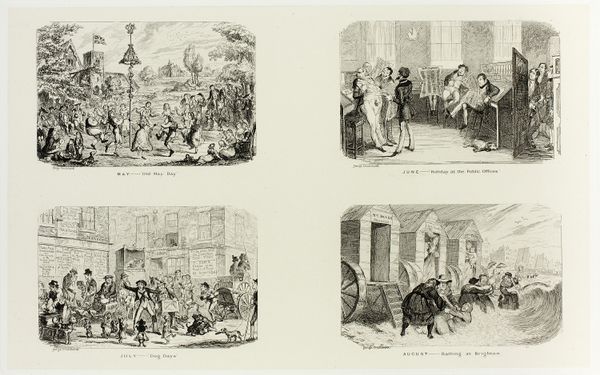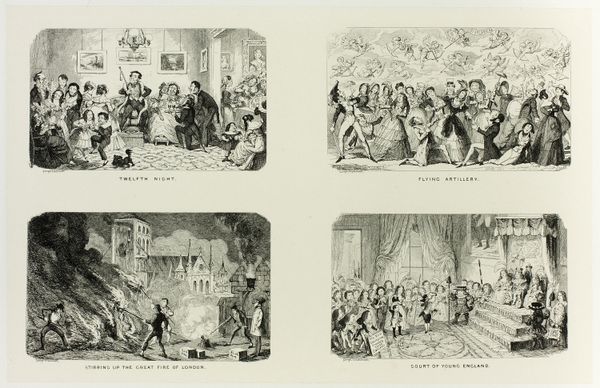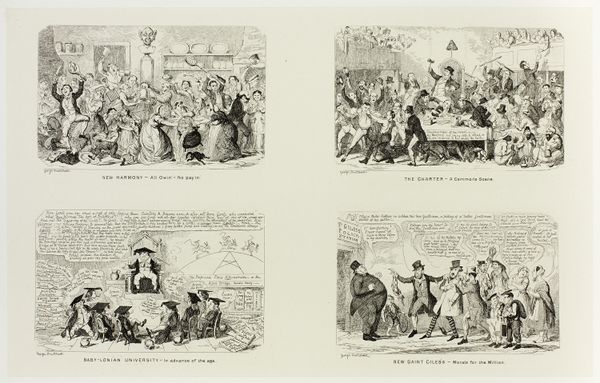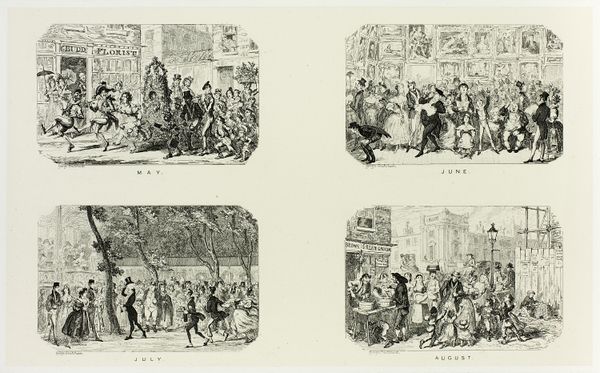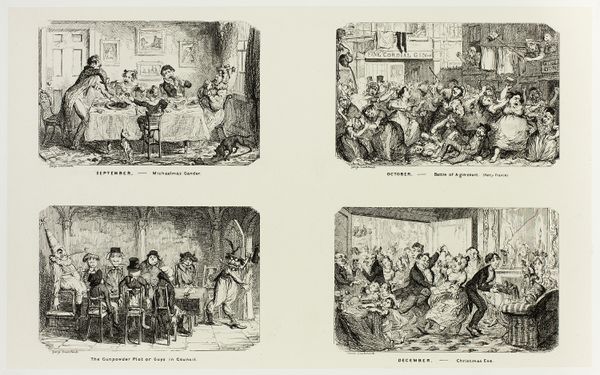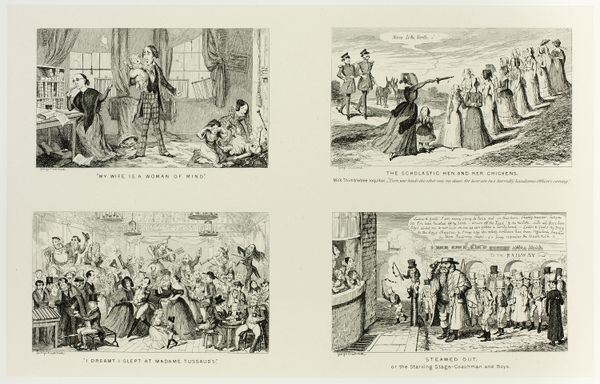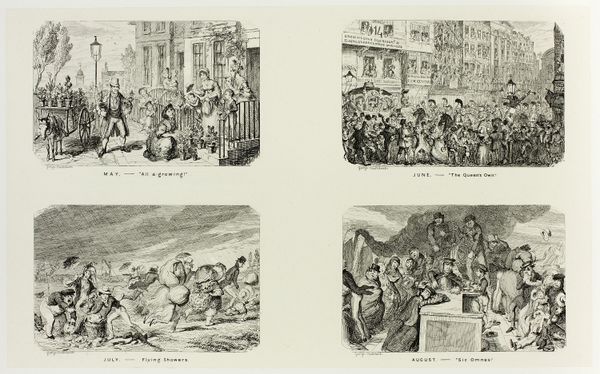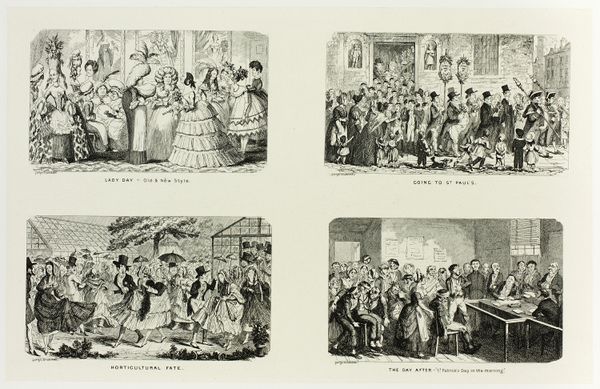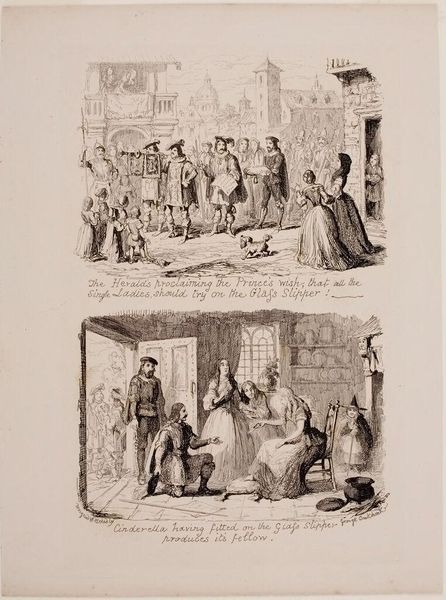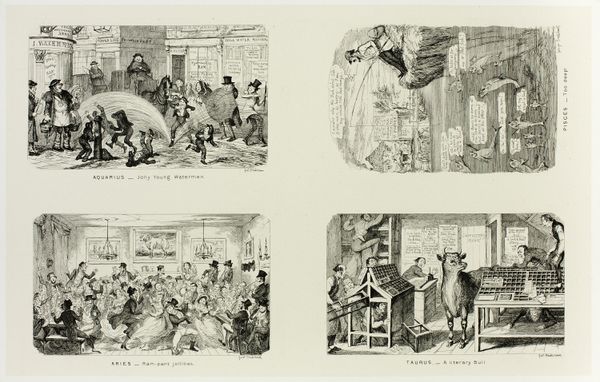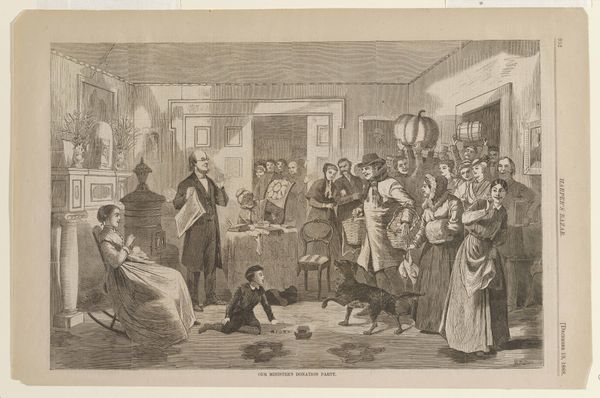
September from George Cruikshank's Steel Etchings to The Comic Almanacks: 1835-1853 (top left) c. 1835 - 1880
0:00
0:00
drawing, print, etching, paper
#
drawing
# print
#
etching
#
caricature
#
paper
#
england
Dimensions: 203 × 332 mm (primary support); 345 × 504 mm (secondary support)
Copyright: Public Domain
Curator: This is a steel etching titled “September from George Cruikshank's Steel Etchings to The Comic Almanacks: 1835-1853 (top left),” dating from around 1835 to 1880, by George Cruikshank, currently held at the Art Institute of Chicago. It's printed on paper, and displays quite a chaotic scene. Editor: My immediate reaction is how incredibly detailed and busy it is for such a small space. All those tiny figures, crammed together...It gives off a sense of bustling, slightly unruly public life. What exactly am I looking at? Curator: Well, this etching, intended for a comic almanac, is essentially a social commentary. It presents a bustling fair or market scene in September. We see a diverse array of people: performers, vendors, onlookers – a cross-section of English society engaged in leisure and commerce. Consider how printed ephemera such as almanacs were instrumental in shaping and circulating visual culture among a broad readership at the time. Editor: That's fascinating! The fact that this was designed for mass consumption changes how I see it. It speaks to the role of art as a social mirror, reflecting, and probably exaggerating, the norms and anxieties of the time. I'm drawn to the way Cruikshank uses etching, really emphasizing the lines, almost creating a sense of movement and energy. It's so effective! Curator: Absolutely. The etching technique allowed for relatively easy reproduction, placing his critical eye in countless homes and businesses across England. The material reality of this print reflects how access to imagery impacted social discourse during the 19th century. These "Comic Almanacks" weren’t merely decorative; they were a subtle form of social commentary distributed widely among a growing middle class. Editor: And looking closer, the figures are almost caricatures, playing into established types and roles, contributing to both humor and, I suspect, a subtle critique of the social order. You see that clearly with the figure being lifted onto the stand on the far right. Curator: Exactly! Each detail highlights societal tensions, especially when we consider production. Prints such as these are not neutral. Instead, we can understand how these visual depictions informed political sentiment within the social milieu of industrial England, with implications for the creation and proliferation of political cartoons. Editor: This certainly shows the value in looking beyond the simple image and investigating art's cultural, material, and historical contexts! I appreciate your insights, bringing together all those interwoven perspectives. Curator: And thank you! By exploring its place in a printed almanac, the material of etching and print, and cultural landscape of early 19th-century England, it opens the door to deeper meanings and richer discussion of visual media.
Comments
No comments
Be the first to comment and join the conversation on the ultimate creative platform.
